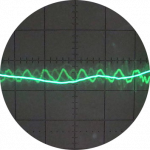Yet another government reverse ferret - flakey grids and property lobbies
Posted by: @johnnybdo small 3 phase units exist for sale in the UK? Thinking about it I imagine they are needed in european countries where it is common to have 3 phases but with less amps per phase,
I'm hoping someone else can answer the first question.
I don't know the range of heat-pumps available here in UK.
Yes, you are correct that 3ph heat-pumps are much more common elsewhere in Europe.
That point was made to me last week in an email exchange with an NGED engineer.
He also pointed out an issue we haven't yet discussed here....
DNOs are concerned at what will happen to the local grid in the event of freezing fog (or similar cold weather).
All heat-pumps connected to the same local substation would most likely freeze up.
The resulting defrost cycles would likely exceed the capacity of the fuses, transformer or both.
Although we commonly have 100A Service Fuses in homes, diversification rules are such that even a new-build is unlikely to allocated as much as 10kW (42A).
So a patch of freezing fog can have a catastrophic effect on the local grid.
Just drawing the attention of @editor to the above!
Posted by: @majordennisbloodnokForgive my ignorance but if one were building a new house on a new plot of land what is the difference in cost between installing single phase vs 3 phase?
This question is linked to the above point I've made about diversification.
A national housebuilder can make a considerable financial saving by appointing an Independent Distribution Network Operator (IDNO) to install the LV cabling to houses, and any new local-substation which might be required. The DNO for the area then only provides the 11kV supply (red Triflex cables below).
IDNOs do not necessarily stick to the same standards as the area DNO would normally apply.
The 440v 3Ph Feeds are much thinner, say 95mm² rather than 210mm²
and can be installed in trenches that are shallow.
They're OK until a couple of houses install EV chargers, and then they suffer thermal stress and burn out where there's a weak point.
Typically that's a kink in the cable, or where the outer sheath/armour was nicked by the digger when back-filling the trench.
The IDNO or their contractors are then called out to 'patch up' the damaged cable.
When you add in the lower cost of providing single-phase to each property, there's a significant saving to be made due to the cost of copper.
Save energy... recycle electrons!
- 26 Forums
- 2,364 Topics
- 53.6 K Posts
- 564 Online
- 6,029 Members
Join Us!
Worth Watching
Latest Posts
-
RE: Octopus Cosy Heat Pump Owners & Discussion Thread
TRV heads do indeed close completely once room temp is ...
By JamesPa , 11 minutes ago
-
RE: Ecodan unable to hit legionella target temp - what's the consensus?
UPDATE: Thanks everyone who commened with suggestions h...
By 9jwr9 , 16 minutes ago
-
-
RE: ASHP sizing - value of Heat Transfer Coefficient
@toodles Hi, my friend recently made a video about heat...
By HeatPumpMe , 23 hours ago
-

How long will your energy contract last?
Some heat pump tariffs don’t run as long as a heat pu...
By Toodles , 2 days ago
-

@morgan They are unsupervised these days, can’t get the...
By Toodles , 2 days ago
-
-

RE: Setback savings - fact or fiction?
Exactly. We only need to compare conditions, to decide ...
By cathodeRay , 3 days ago
-
RE: Balancing financial efficiency and comfort using the Octopus Cosy tariff
I found because I have very low heat loss I can set bac...
By RadWhisperer , 3 days ago
-
RE: Need Help Optimising My Rushed ECO4 Install: 12kW Bosch Heat Pump
Welcome @mickamills We too have an oversized 12kW Sa...
By Old_Scientist , 3 days ago
-
RE: My Powerwall 3 Consumes 3-4 kWh/Day in Self-Consumption: Is This Normal?
@caron I can confirm that the power usage of the PW3 is...
By Old_Scientist , 3 days ago
-
RE: Speedcomfort radiator fans
Thats true, but having tried (and succeeded) in constru...
By JamesPa , 4 days ago
-
RE: Solis S6-EH1P8K-L-PLUS – Why I Chose It and What I’ve Learned So Far
@bash brilliant, thanks for the feedback
By energy9165 , 4 days ago
-

RE: Heat Pump Heats the House… But It’s Not Cosy. Emitter Changes or System Tweak?
@alastair There I was, feeling grumpy, he said “Cheer u...
By Toodles , 4 days ago
-
RE: Grant Aerona: Is there a setting to keep the 2-port valve open during pump blockade
Depends on OAT. Mine cycles at OAT>10 and of course...
By JamesPa , 4 days ago
-
RE: New Fogstar 15.5kWh upright solution
@transparent My conclusion is as you have noted, tha...
By Bash , 4 days ago
-
RE: Mitsubishi Ecodan R290 10kW performance
And to you too. Wishing you a very enjoyable festive s...
By Sheriff Fatman , 4 days ago
-

RE: External pipework insulation
They do? But that isn't apparent from the photos we'r...
By Transparent , 4 days ago
-

RE: Say hello and introduce yourself
@velcro welcome to the forums. Please feel free start a...
By Mars , 5 days ago
-
Daikin EDLA11D3V3 DHW Settings
I have a newly installed EDLA11D3V3 which I'm still get...
By Velcro , 5 days ago





